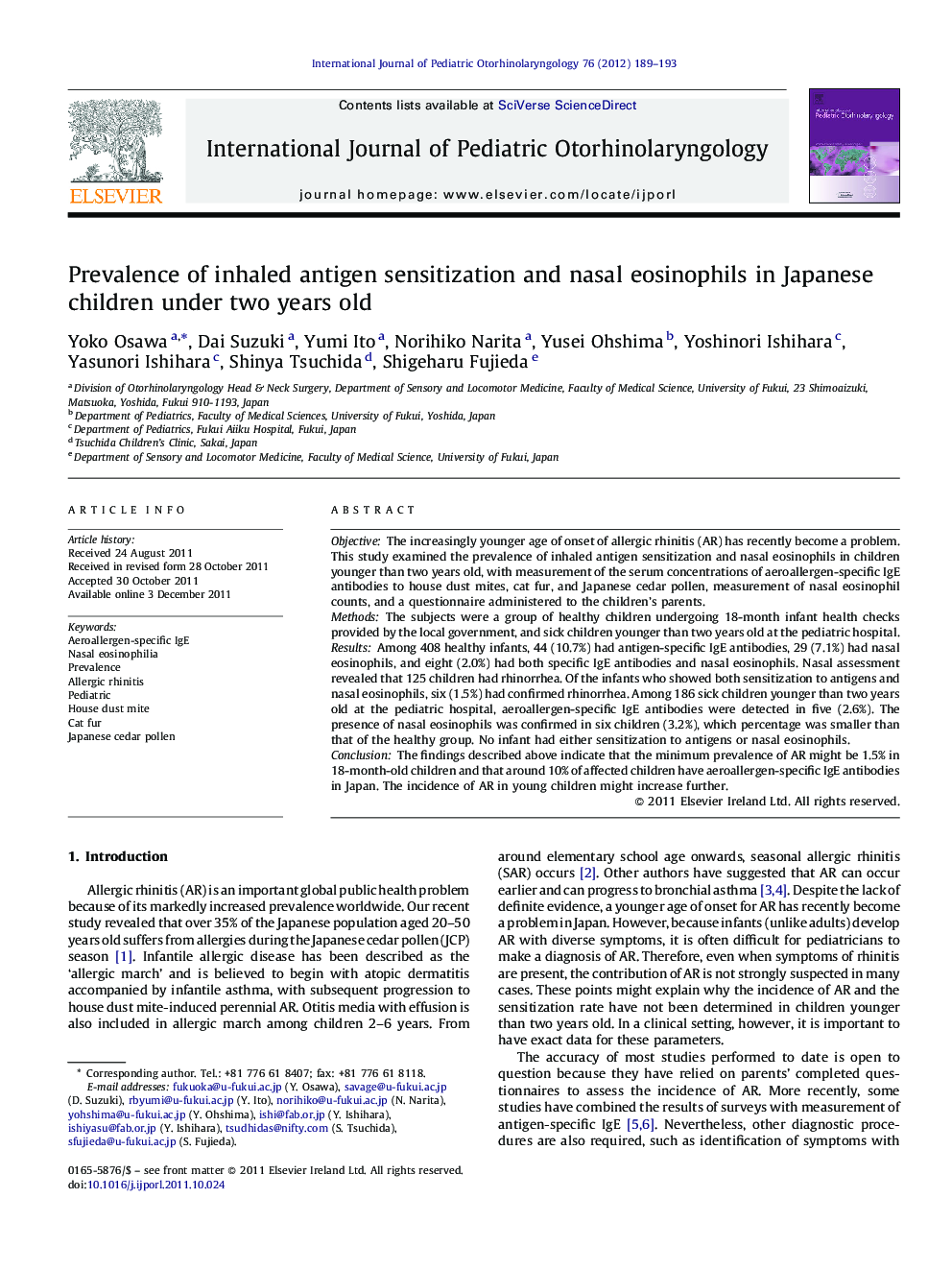| Article ID | Journal | Published Year | Pages | File Type |
|---|---|---|---|---|
| 4113110 | International Journal of Pediatric Otorhinolaryngology | 2012 | 5 Pages |
ObjectiveThe increasingly younger age of onset of allergic rhinitis (AR) has recently become a problem. This study examined the prevalence of inhaled antigen sensitization and nasal eosinophils in children younger than two years old, with measurement of the serum concentrations of aeroallergen-specific IgE antibodies to house dust mites, cat fur, and Japanese cedar pollen, measurement of nasal eosinophil counts, and a questionnaire administered to the children's parents.MethodsThe subjects were a group of healthy children undergoing 18-month infant health checks provided by the local government, and sick children younger than two years old at the pediatric hospital.ResultsAmong 408 healthy infants, 44 (10.7%) had antigen-specific IgE antibodies, 29 (7.1%) had nasal eosinophils, and eight (2.0%) had both specific IgE antibodies and nasal eosinophils. Nasal assessment revealed that 125 children had rhinorrhea. Of the infants who showed both sensitization to antigens and nasal eosinophils, six (1.5%) had confirmed rhinorrhea. Among 186 sick children younger than two years old at the pediatric hospital, aeroallergen-specific IgE antibodies were detected in five (2.6%). The presence of nasal eosinophils was confirmed in six children (3.2%), which percentage was smaller than that of the healthy group. No infant had either sensitization to antigens or nasal eosinophils.ConclusionThe findings described above indicate that the minimum prevalence of AR might be 1.5% in 18-month-old children and that around 10% of affected children have aeroallergen-specific IgE antibodies in Japan. The incidence of AR in young children might increase further.
